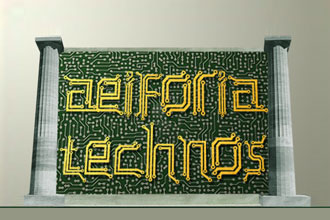
- In 2008 the United State generated over 3.16 million tons of E-waste of which only 13.6 percent was recycled (EPA). This was an increase over 2007 by 13.6 percent. The rest was sent to landfills or incinerated.
- In 2010 $165 billion new electronics were purchased in the US
- In 2010 we generated 3 million metric tons of E-waste in the US
- In 2012 the US generated 20 billion pounds of e-waste, most went to landfills.
- The united States in 2014 pledged to the United Nations during the annual Climate summit that it would curb emissions by 27 percent below 2005 levels by 2025
- E-waste recycling is a booming business in 2015 raking in over $14.7 billion in revenue.
- By 2017 the volume of e-waste will reach 33 percent more than 2012 levels and could rise to 500% in rapidly developing countries such as India, Pakistan, and China.
- Americans are hoarders stockpiling 68 percent of outdated or non-functioning equipment.
- E-waste comprises 2 percent of the waste in landfills but constitutes over 70 percent of the toxic substances in these landfills.
- 300 million computers and 1billion cell phones are produced each year and that is expected to grow 8 percent annually indefinitely.
- Americans export 80 percent of its e-waste to developing countries where regulations on safety are less stringent than here
- E-waste contains lead, mercury, cadmium, arsenic, beryllium, and bromide flame retardants. The substances are known carcinogens and are some of the most toxic on the planet.
- The European Union has banned e-waste from landfills and has laws holding manufacturers responsible for e-waste disposal.
- There currently is only one recycler audit — e-Stewards Certification — that bans export of toxic e-waste to developing countries under international law.
The list could go on forever. So who is making big strides and generating significant revenue from e-waste? Consumer industry giants such as Best Buy, Staples, Cisco, and others have done the heavy lifting and the pro ICT industry should and can follow in their footsteps. As InfoComm International’s annual conference is about to launch in Orland this June, I would urge all attendees to ask the question of the manufacturer’s on the show floor as to what they do to help prevent their products from becoming even more alarming statistics?
If you look at what Best Buy has done (they are the leader in the US for consumer electronics recycling) you will see a roadmap carved from experience and a commitment to improving not only the environment but their bottom line. The Millennial Generation are a key demographic for the electronics retailer and they have researched and understand that the environment is a key driver to decisions as to where and how their dollars are spent.
Best Buy took the opportunity to speak with industry leaders to develop their electronics take back program as a way to develop a meaningful and measurable return on their investment. By doing this it enabled them to be able to clearly articulate to their stakeholders why a program like this was necessary, who will benefit from the effort, and what the ultimate goal/problem is. This allowed them to give the assurance of a successful program.
Once Best Buy was able to answer these questions they had to implement the plan. Having a clear missing and understanding who the target audience is key to success. Corporations need to also realize that this is a living, breathing process that will evolve over time. When Best Buy launched their program it was aimed at activist groups critical of current operations. It enabled them to address these concerns by consolidating existing, high risk, one-off, or unorganized activities already occurring within their company while cultivating new ideas and lessons learned from other industries. This helped to also push new foot traffic into their stores as consumers brought in old electronics for recycling. An off shoot result of this was creating operational efficiencies and increasing revenue through the elimination of wasteful practices. Additionally this effort allowed them to provide a means to alleviate a consumer pain point of what to responsibly do with outdated electronics.
This bore out a cottage industry of up-cyclers, reseller and repair value chains to deal with the influx of e-waste products. It did this by addressing concerns in these areas of the ability to resell or repair technology in a profitable way by removing intermediate layers that reduced their returns. It also linked corporate recycling efforts with consumer offers providing the needed value to the end user.
In order to do this internally within a company there has to be the Champion. By providing that person with a sound business case, clear mission, and measurable goals that they are passionate about success has a greater opportunity as they can get others excited about it both within the corporate walls and to the masses of channel partners and end users.
So you may ask why you should care if the manufacturers you work with and recommend to your customers have an e-waste program. Ultimately it is important to the end user and they will look to you to provide guidance as to a plan on dealing with all the technology you are recommending for their business. Being able to help them with end-of-life technology strategies provides a value added service. To do this you need to know what is available and work directly with the manufacturers to invest in these programs for the pro industry otherwise they might just shop at Best Buy.